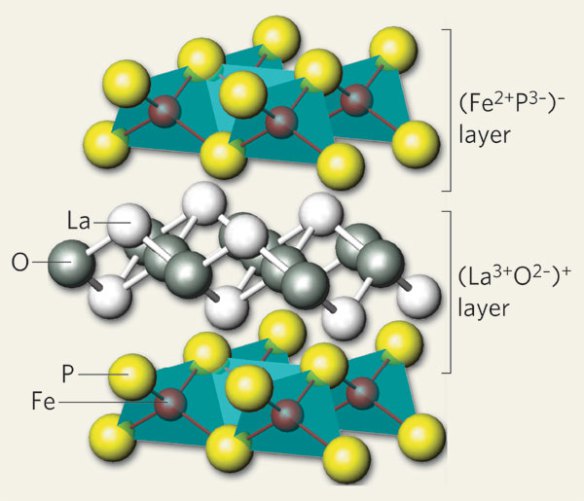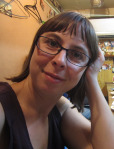Getting pernickety about the 1st pnictide superconductor, LaOFeP
What does it look like?

A new type of superconductor. Showing the different layers in LaOFeP, taken from http://www.nature.com/nature/journal/v453/n7198/full/4531000a.html
LaOFeP, also known as a '1111' superconductor, is a layered structure which is considered conducive to superconductivity, similar to the Cu-O superconductors HgBaCaCuO, YBaCuO and LaBaCuO.
What is it?
A new class of superconductors came to the fore of scientific research around 2006 with the discovery of LaOFeP. While originally labelled as oxy-pnictides, they are now more commonly referred to as Fe-pnictide superconductors and involve compounds containing an element from group 15 of the periodic table (typically phosphorus and arsenic). Instead of relying on conducting layers of copper and oxygen, these new superconductors involve iron and pnictide conduction and so challenge the BCS theory of superconductivity.
These materials have been shown to exhibit typically lower superconducting transition temperatures when compared with the copper oxide superconductors. In this first example, LaOFeP was shown to have zero resistance below 3.2K [1]. In 2008 the same group showed that, by swapping P for As, the superconducting transition temperature of LaOFeAs could be raised to 26K [2].
Where did the structure come from?
While the synthesis and crystal structure were first determined by Zimmer et al. (Journal of Alloys Compounds, 229, p. 238 (1995), this picture was taken from Kamihara et al., JACS, 128, pp. 10012-10013 (2006) who were the first to report on the electronic and crystal structure of this material.
References:
[1] Y. Kamihara, H. Hiramatsu, M. Hirano, R. Kawamura, H. Yanagi, T. Kamiya, and H. Hosono, J. Am. Chem. Soc. 128, 10012 (2006).
[2] Y. Kamihara, T. Watanabe, M. Hirano, and H. Hosono, J. Am. Chem. Soc. 130, 3296 (2008).






